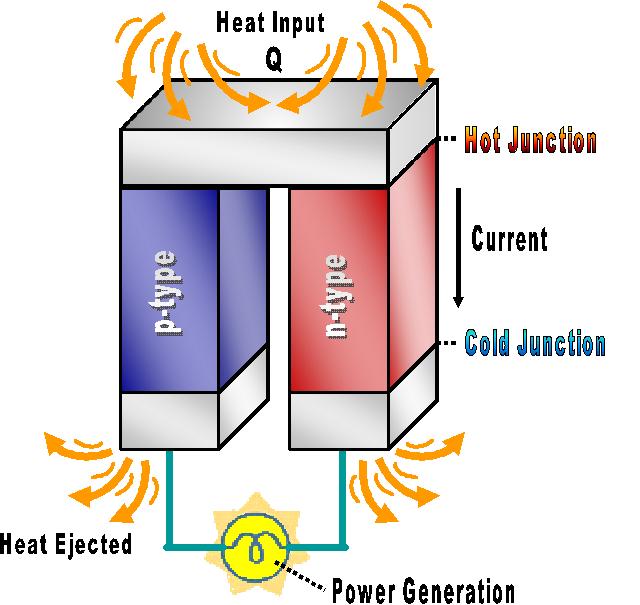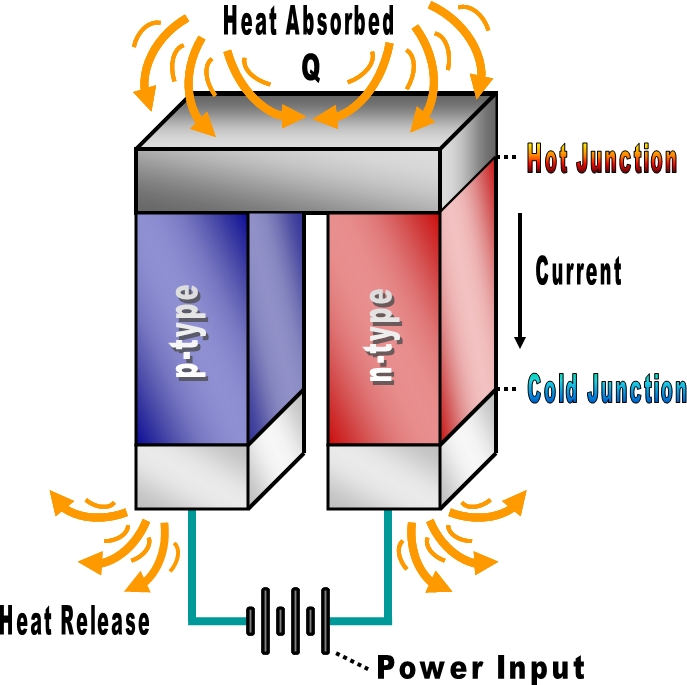Thermoelectric Introduction
Introduction
This page is intended to provide a comprehensive introduction and background regarding thermoelectrics. A brief overview of thermoelectric history is provided in the subsequent paragraphs as well as professional animations are implemented to establish an interactive understanding of how thermoelectric devices operate.
Overview of Thermoelectric History
The principle of thermoelectric effects has been known for over 100 years. It is only recently that practical applications have become more viable. Thermoelectricity is a unique part of solid state technology. Some brief history regarding the development of thermoelectricity will be discussed in the following page.
In 1822 Johann Seebeck reported an observation that a magnetic needle was deflected when placed near a closed loop of two dissimilar wires when a difference of temperature was maintained between the two junctions of the wires. Seebeck’s experiments are considered to be the first observations of the thermoelectric effects. The Seebeck effect is recognized as the production of potential differences through heating of the junctions between two dissimilar conductors.
In 1834, Peltier observed localized differences in temperature near a junction of dissimilar metals, where the respectable temperature was either higher or lower than that of the adjacent metals depending on the polarity of the current. The magnitude of the temperature difference depended on the combination of metals used. The Peltier effect is associated with passing a current through a junction of dissimilar materials where either absorption or generation of heat occurs depending on the direction of the current.
W. Thomson provided the first important theoretical basis for thermoelectricity. He related, mathematically, the Peltier and Seebeck effects and predicted the existence of the Thomson effect. The Thomson effect is regarded as the effect of heating or cooling in a homogeneous conductor when an electric current passes in the direction of a temperature gradient.
Efforts in were expended in research to explore various materials and applications of thermoelectricity. Ioffe is recognized as putting forth great effort to spread the knowledge and possibilities of such technology. It was in the middle fifties that discoveries were made regarding materials which expanded the potential applications of this technology through opening up the possibilities to use larger temperature differences and higher efficiencies.
Future developments regarding thermoelectricity as a technology will introduce many unexplored and challenging applications which will considerable impact the life of all of us.
References:
- Goldsmid H.J. (1960). Applications of Thermoelectricity. Butler and Tanner Ltd., Frome and London, Great Britain.
- Green W B. (1962). Thermoelectric Handbook. Westinghouse Electric Corporation – Semiconductor Department, Youngwood Pennsylvania.
- Gray. P.E. (1960). The Dynamic Behavior of Thermoelectric Devices. The Technology Press of The Massachusetts Institute of Technology and John Wiley & Sons, Inc., New York – London.


